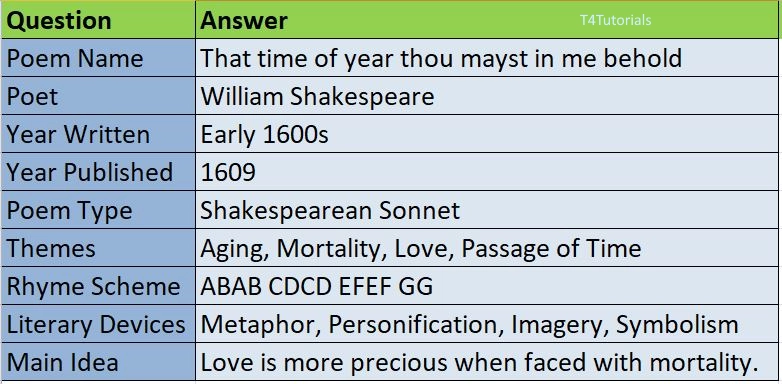Summary:
This poem, also known as Sonnet 73, is one of Shakespeare’s most famous reflections on aging and mortality. The speaker describes himself as being in the autumn of his life, using imagery of fading seasons, the setting sun, and a dying fire to symbolize his approaching old age. He acknowledges that time is passing and that death is inevitable. However, the sonnet concludes with a powerful message: the awareness of mortality makes love even stronger. The poet suggests that knowing time is limited deepens appreciation and affection.

10
Score: 0
Attempted: 0/10
Subscribe
Score: 0
Attempted: 0/10
Subscribe
| Question | Answer |
| Poem Name | That time of year thou mayst in me behold |
| Poet | William Shakespeare |
| Year Written | Early 1600s |
| Year Published | 1609 |
| Poem Type | Shakespearean Sonnet |
| Themes | Aging, Mortality, Love, Passage of Time |
| Rhyme Scheme | ABAB CDCD EFEF GG |
| Literary Devices | Metaphor, Personification, Imagery, Symbolism |
| Main Idea | Love is more precious when faced with mortality. |